Archive for the ‘Featured Author’ Category
J.J. Abrams Unveils Star Wars Episode VII X-Wing
Saturday, July 26th, 2014
It’s no secret that Battleground Games & Hobbies owner Derek Lloyd and I are HUGE Star Wars fans. So, while this deviates from the content you’re use to here at Battlegroundgames.com, check this out:
About Battleground Games & Hobbies
| |||||
| |||||
Tags: Disney, Episode 7, J.J.Abrams, Star Wars, X-Wing
Posted in Blog, Featured Author, Featured Post | 1 Comment »
GP Boston-Worcester Preview: Mental Challenges by Dylan Klett
Friday, July 25th, 2014
Hey everyone!
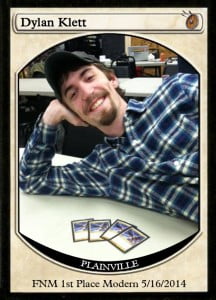
Grand Prix Boston (which is secretly Grand Prix Worcester, for those who haven’t been before) is coming up this weekend, and I’m very excited. Not only is this the same venue where I attended my first Grand Prix ever, but instead of the format being M13 Sealed like the last time I was able to attend, it’s Modern!
Modern is the format I most enjoy playing; I feel like the youth of the format combined with the enormous card pool lends itself to some really sweet game states, and it feels like there’s plenty of room for innovation.
Instead of talking about specific cards or decks today, I wanted to take some time to go over some of the more subtle challenges you’ll encounter as a player at a competitive tournament of any size (although this will be especially true at one as large as a Grand Prix). These are often challenges to your mindset, or obstacles that have little or nothing to do with your skill as a Magic player. Your ability to deal with them can sometimes be the difference between coming away from a tournament feeling like you had a great day and a positive experience, or wishing you had spent the time doing literally anything else.
Be prepared for mental fatigue
This becomes particularly relevant when you get into the later rounds, where both you and your opponent have been playing Magic almost non-stop for the past five, six, seven or more hours. Abundant playtesting will be greatly rewarded here; the less you need to think about the fundamental lines of play and choices your deck will present you with, the more brainpower you will conserve in the long run to deal with those tough, win-or-lose situations.
The more familiar you are with the format and your deck, the better. Make no mistake, you will get tired, and the temptation will be there to just jam your cards in the most straightforward way possible. Try to slow down, catch yourself before doing this, and force yourself to think your options through. It will pay off. Nothing makes you walk away from a match feeling quite as miserable as losing to a mistake you would never have made in round one.
Keep the smaller picture in mind
While playing your match, try to block out as much information as possible from coming in that isn’t relevant to the match. Don’t bother checking the text from your friend to see if they’ve won their match or not, don’t worry about what the players next to you are arguing with a judge about.
Don’t think of the match in front of your in terms of how much if left – if you let yourself worry about how many more matches you have to win, you will focus on results, stress yourself out, and risk losing the focus necessary to win the game at hand. Boil your concentration down to a single goal: there is a match of Magic in front of you, right now, and you’re here to win it. Do it.
Keep the bigger picture in mind
Gerry Thompson wrote an article recently where he described all Magic played competitively or with “a mind to get better” as “one big session.” This has stuck with me over the past week or so; I really like the way this is phrased, and the mentality that this implies. Magic is an endlessly complex and difficult game, and to do well requires of us not only that we learn, but that we learn well.
We must put a conscious effort into our improvement as players, and a large part of this means maintaining an openness to being wrong, to making mistakes, and to stop doing something we are comfortable with in favor of doing something new. We must re-evaluate ourselves. Most importantly, it means failing, and failing even when we feel most sure that we can not or should not.
It’s great to win and winning feels great, but when we win, it is easy to gloss over mistakes we may have made on our way to victory, because we got the result we wanted. The real prize is always noticing something you could have done better, and realizing that you will make that decision better next time. When we lose, we are forced to do this — if not by our curiosity, then by our pride.
When playing at an event and you lose in frustrating fashion — that lucky topdeck the turn before they would have died, or your opponent drawing their one sideboard card against you and you not seeing a single one of seven you put in — it’s fine to feel angry, but keep it to yourself or your close friends, let it pass, and let learning from that loss take its place.
To wrap things up, let me give a sweet example:
At a PTQ I was playing a couple weekends ago, I was playing UB Faeries against Splinter Twin in Round Seven. This is an awesome matchup for me, and I know it — the only thing I know I need to watch out for is Blood Moon out of the sideboard, which can completely ruin me if he gets a chance to resolve it. Other than that, it’s very difficult for the Twin player to win, and one of the reasons to play Faeries in the first place.
Game One goes about as planned: I play a Bitterblossom, cast a couple discard and counter spells, and kill him before he can get even close to the combo. Game Two starts off much the same, and I feel very confident; I play turn one discard spell, turn two Bitterblossom, turn three Vendillion Clique, and pass turn four holding up my hand of one Smother, one Dismember. I know his hand is two Pestermites and a Splinter Twin. At my end step, he plays one of his Pestermites. I kill it using Dismember, paying four life despite having four lands available so I can bluff the maximum amount of other possible tricks. I know every card in his hand, and my last card deals with it nicely. He’s dead in two turns. What could go wrong?
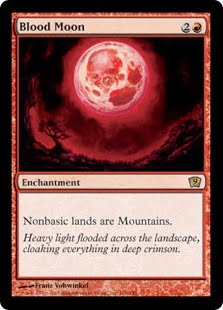
Blood Moon. That’s what.
Suddenly, I am locked out of casting my Smother because my three basic Swamps in the deck had zero of them in play (which is of course, completely reasonable). My opponent breezily deploys his last Pestermite at the end of my next turn and casts Splinter Twin on it while at three life, with my Smother in hand and helpless to resist. Initially, I was frustrated. I had played as much disruption as it was possible to play against one of my best match-ups and still lost to what felt like dumb luck.
Blood Moon is a stupid card, I wanted to rant. Why is it legal in Modern? It never leads to fun games.
It took me about 10 minutes of being on 45-degree tilt before I realized how I could have won that game, Blood Moon be damned. If I had cast Smother instead of Dismember on his first Pestermite, using my black spell while I still had black mana, I would have still had Dismember in hand when my opponent plucked that Blood Moon off the top of his deck like a ripe fruit. Go ahead, cast your Splinter Twin. I’ll tap my newly minted Mountain and pay four life. Kill it. Kill you. No black mana required.
Instead, I let my confidence in the matchup and my exceptional series of draws cloud my judgment, and I allowed myself to stop thinking of what could make me lose this game. When I stopped thinking about how I could lose, I stopped playing around it. And I lost.
If that isn’t proof that Magic is a wonderful game, I don’t know what is.
About the Author
Dylan Klett is a local competitor who can usually be found at the Plainville store for Friday Night Magic. To request more articles by Dylan, let us know by emailing Sims@battlegroundgames.com
Join the Battleground Games & Hobbies community forums!
Please don’t forget to check us out on Facebook and follow us on Twitter @battleground_gh!
Tags: Dylan Klett, Magic the Gathering, Modern, MTG
Posted in Blog, Card Games, Featured Author, Featured Post, Magic: The Gathering | 2 Comments »
Tempo-Twin for Grand Prix Boston-Worcester
Friday, July 25th, 2014
Greetings Magic the Gathering fans. This is my first actual article for Battlegroundgames.com and in it, I’m excited to be writing about the ever-evolving Modern format — a format I use to very much dislike. Thankfully, I found an archetype I can get behind and now fully support this really interesting format. Can you guess what it is?

Yup, that’s the one – Splinter Twin; the Blue-Red Tempo version, to be exact. There’s nothing more exciting that creating four-billion 2/1 or 1/4 creatures! This will be my weapon of choice for Grand Prix Boston-Worcester 2014 tomorrow morning.
The deck plays essentially like a control deck with a combo finish, utilizing the Splinter Twin (or Kiki-Jiki) plus Deceiver Exarch or Pestermite combo in order to make an infinite amount of token creatures. Here is the final decklist and sideboard:
Land:
5 Island
1 Mountain
4 Scalding Tarn
4 Misty Rainforest
1 Desolate Lighthouse
1 Stomping Ground
4 Steam Vents
3 Sulfur Falls
Creatures:
4 Deceiver Exarch
2 Pestermite
1 Kiki-Jiki, Mirror Breaker
4 Snapcaster Mage
2 Vendilion Clique
1 Spellskite
Spells:
4 Splinter Twin
2 Electrolyze
2 Flame Slash
4 Lightning Bolt
1 Dispel
2 Cryptic Command
4 Remand
4 Serum Visions
Sideboard:
2 Anger of the Gods
2 Blood Moon
2 Ancient Grudge
2 Keranos, God of Storms
1 Counterflux
1 Negate
1 Echoing Truth
1 Dispel
1 Batterskull
1 Vedalken Shackles
1 Spellskite
Essentially, a fairly standard list, all things considered. When compared to most other versions out there, I have an extra Steam Vents (for the Vedalken Shackles in the sideboard); only one Spellskite; an additional Electrolyze; and no Peek/Gitaxian Probe. Spellskite seems to be increasingly mitigated of late as a lot of matchups are increasingly prepared for this card. However, having an 0/4 blocker can be useful and it’s redirect ability is still randomly useful and has a wide range of applications. Electrolyze has been amazing lately and I play the deck as a control deck that wins with a combo; Electrolyze helps with that goal. Finally, Peek/Probe felt far too low impact and often times, regardless of knowing my opponent’s hand, my lines of play were the same regardless.
Why Splinter Twin?
This goes back to Grand Prix Richmond 2013. After the banning of Deathrite Shaman, I immediately gravitated toward the Blue-White-Red Control deck that Shaun McLaren won Pro Tour Born of the Gods with. I’m a control player at heart and this deck felt perfect to me. Despite this, I put up a very disappointing 2-1-2 record and dropped, disappointed. What happened? The metagame had shifted; Lightning Helix just wasn’t cutting it and the deck has an awful lot of trouble actually finishing a game (hence the draws). So, I went back to the drawing board.

Never underestimate this little guy.
I knew I wanted to play something powerful, especially given the amount of combo decks in the format. I owned all the cards for Splinter Twin and I played the deck when it was Standard-legal. With that, I didn’t see that I had any other choice; Splinter Twin it is.
Ultimately – aside from card availability and basic familiarity – I chose the deck because it’s inherently powerful, consistent, and has positive match ups against the other combo decks (though Scapeshift is a bit closer) and Affinity. Furthermore, the mana is solid and allows for the use of Blood Moon (a very powerful trump in a lot of matchups, especially the Jund/Junk/Rock decks). I briefly tried the Tarmo-Twin deck popularized by German professional Magic player Patrick Dickmann, but I hate losing to my mana base, despite gaining some powerful cards and – I think – a better sideboard. Overall, consistency goes a long way to generating wins, especially in long tournaments.
Fin
I’m excited to be doing battle with Splinter Twin and very much looking forward to the Grand Prix. I’ve put a lot of practice into the deck, so I feel confident for big things. Wish me luck and look forward to an after-action report following the Grand Prix! If you’re in attendance, please say hello!
About the Author
Chris Alexander is the Online Store Manager for Battleground Games & Hobbies. He has a vast amount of experience in the industry having stints with other major internet companies. He is a lover of games and Islands. He dislikes Mountains and anything associated with them except for Splinter Twin. When he is not playing “Magic: The Gathering” or board games, he can be found with his two loving dogs; typically cleaning after them.
About Battleground Games & Hobbies
| |||||
| |||||
Tags: Grand Prix Boston-Worcester 2014, Magic the Gathering, Modern, MTG, Splinter Twin, Tournament
Posted in Blog, Card Games, Events, Featured Author, Featured Post, Magic: The Gathering | No Comments »
This week in Magic: A Modern Primer
Thursday, July 24th, 2014
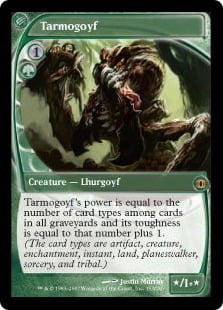
Is it still Grand Prix Boston or is it Grand Prix Worcester? Even worse, do we call it Grand Prix Boston/Worcester? Actually, according to the official site of “Magic: The Gathering,” they have it listed as Grand Prix Boston-Worcester. Well, however you see it, the Grand Prix is finally here. Are you ready for it?
I’m as ready as I have ever been for a tournament. Never have I ever prepared this much for any kind of tournament. I have the attention span of bubble gum. For me to stick with a deck this long is unheard of. There is, of course, plenty of time for me to call an audible and switch decks the night before.
If all goes as planned, I will be running Mono Red Burn. This is slightly different from Red Deck Wins as this deck runs fewer creatures and a heavier burn package. This also should not come as a surprise as I have been writing about the deck for the past several weeks. Note: I do plan on finishing that series. I’ll most likely do it once the GP ends and will have final thoughts about it.
What about you? What are you planning on running? Don’t worry; there really is no wrong answer to that question. Here is a quick breakdown among the three different types of meta: Combo (37%), Control (27%), and Aggro (36%). Now that we know this info, let’s break things down even more. We’ll go a little more in-depth with each meta and look at the different decks that are the most popular within their meta.
Aggro
To no one’s surprise the top dog here is Affinity. This deck is so good and very fast. When you’re on the other side of things, there is no greater fear than watching your opponent drop their hand on the first turn of the game. Who knew that something like Signal Pest, such a small and very un-intimidating creature, can be so deadly? When he’s teamed up with his buddies Memnite and Ornithopter (even Inkmoth Nexus) things can quickly get out of hand. Knowing your opponent is playing Affinity is not always the end of all things. I’ve seen plenty of these decks sputter out and run out of gas. Keep your head cool and things will be okay.
Next up is Jund. This is one of those decks that took every powerful card in the format and smooshed them all together. Take a look at its creature package for example: 4x Tarmogoyf, 4x Dark Confidant, 3x Scavenging Ooze, and 3x Courser of Kruphix. A very strong creature package teamed with a very disruptive spell package, and you have the makings of the one of the best Aggro decks in the format. Thoughtseize, Inquisition, and Liliana are the best in the game. Get ready for a fight and have a well prepared backup plan ready when these are pointed at you.
I played against a UR Aggro deck at a recent GPT. I remember staring down a Young Pyromancer on turn two and had the choice of burning my opponent or killing the creature. It was early on in my Mono Red Burn experience, so I opted to burn my opponent in the face. I can definitely tell you that I paid for that mistake in full. The next time around, I did not hesitate to burn it and I went on to win the match. This deck is just a conglomerate of Delvers and a spell package tune for tempo. Don’t let this deck’s appearance fool you. It packs a solid punch.
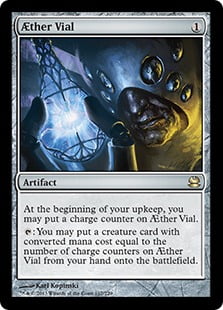
Merfolk rounds out the top five decks in the Aggro meta. This deck takes full advantage of the Aether Vial and shows why this card is so powerful, no matter what format it’s in. You need to take these fish seriously. In it’s entire creature package, half of them are lords. Each one pumping the other up. Add Aether Vial into the mix and you have a recipe for destruction. One thing to keep in mind, though, is that while the Merfolk player is playing islands, they don’t play many counterspells. Don’t be afraid to run a spell or two out out there.
Control
I’ve always been a big fan of Tron decks. Therefore, to see this as top deck in the Control meta makes me very happy. Playing with the Urza Tron lands almost feels like cheating in a way, but you’re not. Being able to produce seven mana on turn three allows the player to do many silly things. One of those things is being able to cast Karn Liberated. At first glance, sure, he’s a pretty powerful planeswalker, but on turn three it’s not fair. After his first positive activation, he sits there at ten loyalty and almost impossible to kill with creatures. Even worse, he exiles permanents getting around any kind of indestructibility they might have. If you let things get too far, he just resets the game.
Tron decks have numerous ways to have fun besides Karn. If they need to they can play Wurmcoil Engines and even CAST Emrakul, the Aeons Torn.
In the recent weeks, I’ve seen GB Rock decks pick up in popularity. With their package of hand disruption, I’m not surprised, especially since Twin is one of the most popular decks in the format. I know what you’re saying, though. “Jund runs a similar package.” Yes, but now we’re dealing with two colors. In a format where mana can be a serious issue, having stability can be more appealing than added aggressiveness. Obstinate Baloth is a nice touch. Not only is it great against Mono Red decks, but it helps Rock players with sustainability, and Liliana is a real threat. Imagine discarding a Baloth to a Liliana? Ouch.
I’m going to put UW and UWx Midrange decks together. This color combination will always be a very popular choice. The strat is a little simple: control the game until late, then let your man-lands take over. It takes a special person to pilot control these kinds of decks. However, once mastered these decks can prove to be very powerful. With the splash of Red, the player gains access to spells like Lightning Bolt, Electrolyze, and an endless amount of ammo for your side board. The obvious difference between the decks is how aggressive the UWx Midrange decks can be. In the end, it really comes down to your play style.
Combo
This meta has some of the most powerful and popular decks in the format. However, while it may be difficult, they are not unbeatable. First up is Birthing Pod. This deck was a house in Standard. With an expanded line-up, there isn’t any surprise that it’s, once again, running the show. Although, from what I’ve heard, there hasn’t been much spotted in the Massachusetts area – at least in the South Shore. This is one of those tool box decks that plays numerous one-ofs. These “one-ofs” are enough to win a person the game and match. The creature package from casting cost one through three are almost the same every time: Birds, Voice, Finks, and and Hierarch. Getting a Pod out as fast as you can is key and once it’s out, things can start to turn in favor of whoever played it first.
One of the most popular versions was the Melira Pod combo. This aimed to get a creature like Viscera Seer out with Melira, then continuously sacrifice Kitchen Finks to scry through your entire deck and gain millions of life. Another cute combination I came across, recently, was the interaction between Archangel of Thune and Spike Feeder. I was lucky enough to stop this frightening combo, but I emptied my hand in the process. It was worth it. There are even version of Pod that play Kiki-Jiki. This has the same premise as the Twin Control decks, but uses a Birthing Pod to get the tools into play.
Speaking of Twin, this is one of the most popular decks I have seen in the area. Again, there are a couple of versions people like to play. There is the regular Twin Exach combo deck and then there is Tarmo-Twin. The regular version of the deck plays a strong control game, while it try to get it’s combo pieces. You know your opponent is trying to go off if they play either a Deceiver Exarch or Pestermite at the end of your turn. This tends to lead into a Splinter Twin being played the following turn. The Tarmo-Twin decks play (if you couldn’t tell already) Tarmogoyfs as an alternative win condition. At first sight it seems a little weird, but this just proves how powerful this little guy is. Having trouble with a deck your playing? Play four Tarmogoyfs and all your troubles will go away – even if you’re not playing Green; force it in there.
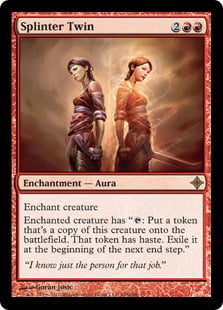
So how does it work, really? Well, once your opponent has either a Pestermite or Deceiver Exarch in play, they will cast a Splinter Twin onto it. The aura gives the creature the ability to tap itself and put a copy of itself into play with haste. The neat trick here is that when either of these creatures comes into play, they can untap a permanent they control. Can you guess what get’s untapped? That’s right, the original creature with the Splinter Twin attached to it. The player goes on to make enough copies to get through your defenses and kills you via a swarm of creatures.
Scapeshift is another very popular Combo deck in the area. There is a little bit of math involved here, but if you understand the timing (and the person who plays this deck will, most certainly) then you can control one of the most devastating decks in the format. Scapeshift is a sorcery speed spell that allows the caster to sacrifice any number of lands. They then search their library for that many lands and put them into play. Sounds boring, right? Well you’re partially correct. The key card they have to get is Valakut, the Molten Pinnacle. Without this card, the deck plays a lot of lands (specifically mountains) for nothing. Be a little cautious though, Scapeshift sometimes packs a small package of counterspells. I learned the hard way that this deck can have up to four Izzet Charms. This is bad when you’re a Mono Red Burn player.
The last of the Combo decks are Infect, Living End, and Storm. Infect is one of those decks that you know right away if you’re playing. You don’t know how many times I’ve heard people groan at the turn one Glistener Elf. It could potentially kill you on turn two. As long as you keep it off of anything it can pump up, then you should be okay. Living End is one of those decks that can just show up and win a tournament. A big reason is because no one knows how to play against it. For some, the Cascade mechanic is still a bit of a mystery to them. Just remember this, you can still counter a spell that is being cast via Cascade.
Finally, Storm reminds me a little like Scapeshift. Although, I guess the same could be said for any combo deck. Basically, I’ve seen plenty of Storm decks fizzle while attempting to combo off. As a Mono Red Burn player, I hope to cast an Eidolon of The Great Revel before they go crazy. However, if you’re not in my position, then hope to kill them before they kill you. Thanks to the ridiculousness in high variance for these decks, not many people choose to run them.
Well, that’s it for now. I really hope you enjoyed this “small” primer of what to expect this weekend at the GP. The Modern Format is such an open format, though. I remember someone mentioning to me that it all depends on what the flavor of the week is. Considering how many decks do well time and time again, that person may have a valid point. Remember to get plenty of sleep and, most importantly, try to have fun. I’ve missed these big events the past three years due to either illness or something else. I’m going to do my best to have as much fun as possible.
PS. Don’t forget to say hello if you see me this weekend. Let’s take some photos together!
About the author
Simeon is now the Community Manager for Battleground Games & Hobbies. If you have any questions or inquiries, then you can reach him at Sims@battlegroundgames.com. He is also an avid gamer who loves to play board games and video games. He graduated college with a degree in Political Science, and now serves the public by writing about games. You can check that out here. Don’t forget to “like” him on Facebook as well. It’ll update you on all of his newest content. Best of all, you can follow Simeon on Twitter (@SimeonCortezano) for some real time hilarity. Thanks for reading!
Donate to the Extra-Life fundraiser!

Join the Battleground Games & Hobbies community forums!
Please don’t forget to check us out on Facebook and follow us on Twitter @battleground_gh!
Tags: gp boston, Magic the Gathering, Modern, MTG, Simeon Cortezano, Wizards of the Coast
Posted in Blog, Card Games, Featured Author, Featured Post, Magic: The Gathering, Popular Posts | 1 Comment »
This week in Magic: Fat challenges, fat packs
Thursday, July 17th, 2014
This has been one of the craziest weeks of my life. If all goes right, hopefully it will get even crazier with the Fat Pack Challenge that is coming up this Friday. How many of you have been to the Fat Pack Challenge before? Okay. Well you’re in or treat. As the name implies, instead of having the usual six packs for a sealed event, we’re using Fat Packs – which have nine packs.
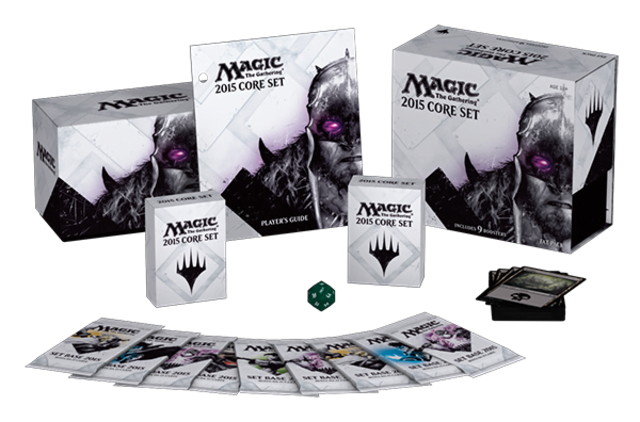
You would think that there would be little difference between six packs and nine packs. However, this is a huge difference. It is makes for quite the challenge. Hence : “Fat Pack Challenge.” More options basically mean more decisions to make. If you asked me which would I prefer? It’s really nice having to make decisions than no decisions.
When I last talked about the Fat Pack Challenge, it was for Journey Into Nyx. That was an interesting Challenge. The biggest reason was due to the potential to open up a God Pack. Unfortunately, no one at either event (Abingtong & Plainville) opened one (at least to my knowledge). In this round of the Challenge, there are no God Packs. Still, Magic 2015 has shown itself to be a really fun set.
Ornithopter – really?
From what I had read along the Twitterverse, Ornithopter was in a lot of main decks over the weekend at pre-release events. Just check out this dicussion thread started by Marhsall Sutcliff and replied by Owen Turtenwald:
https://twitter.com/OwenTweetenwald/status/488191104274034688
Who would have thought that this little guy would be such an all star? From being an easy sac target for Shrapnel Blast to being one of the many creatures to cast spells with Convoke, Ornithopter seemed to do it all. I mean, to think about it, I wouldn’t even want to bother killing it. I guess that’s why it’s such a threat.
However, based off of some of the reactions by the professional players, while it may have been a surprise that many people were playing it main board, they still thought it was not even worthy of coming in from the side board. This is definitely something to think about.
How do you feel about it? Would you play it for some cheap effects? Let me know. I’m quite curious to know.
17 lands or 18 lands?
I’ve always been accustomed to playing 17 lands in Limited. I think that playing 18 is something situational, and only if you’re playing into a heavy curve. In a recent article, Travis Woo discussed this very issue. According to Travis, he states that playing 17 land is more situational and something you do if you play ramp spells. By playing 18 lands, you help yourself by lowering the chances of getting mana boned, and you increase your chances of being able to play that high CC bomb you’re looking to drop on your opponent.
Why do I play 17 lands? I guess the question should be more like, “When should I play 17 lands?” For starters, if you have a small mana curve, then it would make total sense to play 17 lands. In a deck where your highest casting cost spell is four mana, the last thing you want to happen is to get land flooded. Just keep in mind, sometimes it’s better to play a little loose and safe rather than tight and dangerous.
More possible strategies
Some of these strats may be basic to some of you, but the Fat Pack Challenge tends to bring out new players. For them, this is the first time in a sealed event. So, here are some tips from the Zen Master of Sealed: me (Ken Briscoe can testify to this).
When making your deck, try to stick to one or two colors. As you get into three or four color territory, the potential to miss your colors goes up. What can be done to remedy this? One thing that can be done is mana fixing. Luckily in M15, we have the benefits of the Pain Lands making their return to Standard. While you only get two colors out of them, producing a 2-for-1 is still nice. Thanks to spells like Nissa’s Expedition and Verdant Haven, mana fixing becomes a little bit easier as well, so long as you’re playing Green.
Stick to 40 cards. Don’t go 41, 42, or 43. Now I’m sure you’re asking why. The main reason is to be able to draw the spells you want. There is a great article from Jeff Cunningham (circa 2006 via the Mothersite) that explains this well. Playing 40 cards allows for a more focused strategy. Typically when you play more than 40 cards, it can end up diluting your deck and your draws. When you draw a spell from your deck, you want that card to make an impact and not linger around. In some cases, by the time that particular card’s moment to shine comes, it may be too late for you.
Some final thoughts
The most important thing to remember at these events is to have fun. These strategies I proposed at just that – proposals. You don’t have to follow mine, or anyone else’s word. However, I do want you to win. So use the advice I have given you any way you see fit.
That’s it for this week. If you do attend the Fat Pack Challenge, let us know. We want to hear about your experiences in general and your experiences with playing the cards in the Limited format. Also, if you didn’t know, we have also started an Instagram and Tumblr page. If you take any photos from the event, then feel free to share them with us and other Magic: The Gathering fans out there. If you have your own accounts on these sites then don’t forget to tag us in the photos. If you don’t you can always send me any photos you’d like posted on the site to my email: Sims@battlegroundgames.com
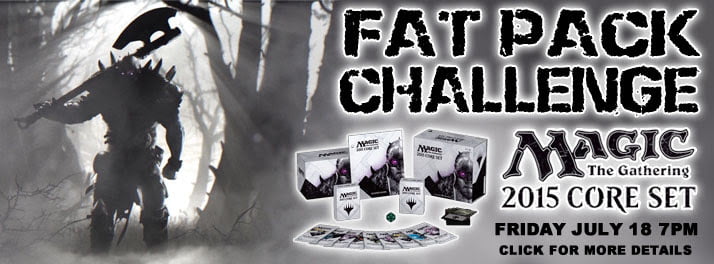
About the author
Simeon is now the Community Manager for Battleground Games & Hobbies. If you have any questions or inquiries, then you can reach him at Sims@battlegroundgames.com. He is also an avid gamer who loves to play board games and video games. He graduated college with a degree in Political Science, and now serves the public by writing about games. You can check that out here. Don’t forget to “like” him on Facebook as well. It’ll update you on all of his newest content. Best of all, you can follow Simeon on Twitter (@SimeonCortezano) for some real time hilarity. Thanks for reading!
Donate to the Extra-Life fundraiser!

About Battleground Games & Hobbies
| |||||
| |||||
Tags: Fat Pack Challenge, Magic the Gathering, MTG, Simeon Cortezano, Wizards of the Coast
Posted in Blog, Card Games, Events, Featured Author, Featured Post, Magic: The Gathering, Popular Posts | No Comments »
This week in Magic: M15 pre-release primer
Thursday, July 10th, 2014
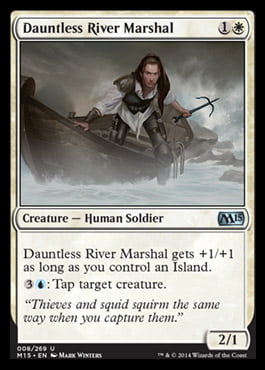
It’s that time of the year again, Magic lovers: another core set is upon us. That mean this weekend, all over the world, local game stores will be hosting pre-release events. Have you studied up on your core set yet? Do you have an idea as to what color you’re going to ask for? Are you confused? It’s okay. That’s what I’m here for. Let me present a little primer you can use heading into this weekend’s pre-release.
There is a lot to go through, so we’re going to go through each color, one by one. Also, a lot of the times, the mythics and rare cards tend to stand out on their own in terms of power. With that in mind, let’s take a look at the commons and uncommons. These are cards that people look over because of their rarity (or lack there of).
I don’t plan on doing a series, so you’re going to get an abridged version of each one. So where should we start? How about with…
White
In Limited formats, creature removal is always on the lighter side of things – meaning that there isn’t much to go around. If you do come across some, your best bet may to run the colors where your removal lies. However, that’s not always the best decision. So keep in mind what your pool, as a whole, has to offer.
So what stands out to me? One card I really like is Oppressive Rays. While it doesn’t get rid of your problems entirely, they do hinder your opponent quite a bit. In fact, sometimes it just isn’t worth it for your opponent to pay mana in order to attack or use a creature’s ability. In that sense, this can be considered creature removal.
Another card that stands out is Pillar of Light. This is a three mana Instant spell that removes a creature with toughness “4 or greater.” This is really interesting because usually cards are worded to have “power” be the leading cause of removal, but in this case, we need to pay attention to the creature’s toughness. This can still be effective in the event that the creature has such a high toughness, it makes attacking difficult.
As far as creatures go, Dauntless River Marshall is a really solid creature. Played in the right colors, he will be one of the best creatures in the format. As long as you have an island in play, he will be a 3/2 for two mana. His ability to tap creatures has always been a really good ability in the past. The added bonus of not having to tap to activate it will prove to be very useful.
Blue
Void Snare is probably in the Top 3 for the entire set in my opinion. I think it’s even good enough to see play in Standard. So what does it do? For one blue mana, you can return target nonland permanent to its owner’s hand. It may be a little slow for some people, but keep in mind this can return Planeswalkers to their owner’s hand.
Another Blue spell I am a big fan of is Encrust. For three mana, we can enchant a creature or artifact. Once enchanted, that permanent does not untap during their controller’s untap step and it’s abilities cannot be used or activated as well. Sounds good to me.
The best Blue creature here s definitely the Jorubai Murk Lurker. Similar to its white counterpart, give that the player is playing the right color combination, it can be a 2/4 for three mana that has the potential to gain its owner life. Sound familiar? Yes, that’s because it sounds just like a Courser of Kruphix.
Black
When Stab Wound made its debut in Return to Ravnica, it was winning games on its own. If a player could stick it onto a creature that was say a 2/3 – making it a 0/1 – that player would not have to attack or rarely play another spell. Once applied, the enchantment would be enough to kill the opponent over time.
Necrobite is another great spell in black. It will definitely be one of those combat tricks that, if you fall victim to, will feel very painful. Here’s a terrible scenario you may not want to be part of. Imagine swinging for the win with a creature your opponent could not possibly kill given what’s on the board. Your opponent goes to block with a tiny 1/1 and with no card in your hand (and nothing to worry about) they cast Necrobite on their creature, thus kill your creature and their’s surviving. Time to break out the tissues.
I really think that the Leeching Sliver is the best creature Black has to offer in the common/uncommon field. The best part is that is only gets better the more slivers you can attack with. Yes, I understand that it’s completely conditional, but it’s worth it in the end. Think about it, then get back to me and let me know what you think about it.
Red
Stoke the Flames is at its best when its caster can convoke any part of its casting cost. Still, to be able to do 4 damage for four mana is pretty good in Limited. There are not many 4 damage spells in the game. However, remember that this spell can only hit a player. Knowing myself, though, I’m sure I will still be pointing it at creature numerous times – even after I’ve been told I can’t by Ken Briscoe.
Lightning Strike and Shrapnel Blast are tied as “next best spell.” You’re probably asking why Shrapnel Blast? I understand you need to sacrifice a creature (and there is a wonderful creature you could sacrifice if you get it within your pool). The chance to do 5 damage to either a creature or a player is huge. As for Lightning Strike, it is as close as we’ll get to a Lightning Bolt until they reprint Lightning Bolt (which should happen any day now).
For creatures, I think the Generator Servant will be the one to look out for. If it doesn’t get killed right away, providing two extra mana the following turn (five mana at the earliest) and its controller could easily cast one of the Souls (cast on turn three, activate on turn four and don’t miss a land drop). The outcome is very fightening.
Green
There are not a lot of non-creature spells I am a fan of. So, instead lets take a look at the creatures. First up is the Sunblade Elf. Out of this entire cycle of creatures, I think this one will definitely see play in Standard. Thanks to lands like Temple Garden and Green/White being a popular deck color combination, having a 2/2 for one mana is like the good ol’ days of playing turn one Savannah Lions. However, in this case, we have a 2/2 rather than a 2/1 which is a huge difference coming off of turn one.
I’ve always been a fan of Wall of Mulch. The only other time it was printed was in Onslaught (which makes me this old). Even then I think it was a solid card. I liked that it was a decent sized wall for only two mana. The best feature about it has to be that you can draw a card with it. This could potentially save your life by blocking something huge, then pay that one green mana and draw yourself a card. Thanks Wall of Mulch for being such good friend!
Finally, Roaring Primadox is one of those creatures, when dropped, can make your opponent cringe. First of all, its a 4/4 for four mana. That alone is really solid. Now, add in the ability to combo with another creature, and the potential can be devastating. Take, for example, Heliod’s Pilgrim. You could potentially fetch up a aura spell every turn. Or imagining bouncing your Tireless Missionaries and casting them again over and over, gaining three life each turn. Talk about back breaking.
Well that’s it for now. I hope you found this enjoyable and helpful. After you get back from your pre-release event, come back here and let us know what your experience was like and what awesome cards (or combinations) you got to play. Have fun this weekend.
About the author
Simeon is now the Community Manager for Battleground Games & Hobbies. If you have any questions or inquiries, then you can reach him at Sims@battlegroundgames.com. He is also an avid gamer who loves to play board games and video games. He graduated college with a degree in Political Science, and now serves the public by writing about games. You can check that out here. Don’t forget to “like” him on Facebook as well. It’ll update you on all of his newest content. Best of all, you can follow Simeon on Twitter (@SimeonCortezano) for some real time hilarity. Thanks for reading!
Donate to the Extra-Life fundraiser!

Join the Battleground Games & Hobbies community forums!
Please don’t forget to check us out on Facebook and follow us on Twitter @battleground_gh!
Tags: core set, Magic the Gathering, MTG, Pre-release, Simeon Cortezano, Wizards of the Coast
Posted in Blog, Card Games, Events, Featured Author, Featured Post, Magic: The Gathering, Popular Posts, Store Related | No Comments »
Email Us
abington@battlegroundgames.com
norton@battlegroundgames.com
saugus@battlegroundgames.com
framingham@battlegroundgames.com
Archives
- October 2025
- September 2025
- June 2025
- May 2025
- March 2025
- November 2024
- October 2024
- September 2024
- February 2024
- October 2023
- June 2023
- January 2023
Categories
- Products
- Buylist
- Policies
- Contact Us








Social: